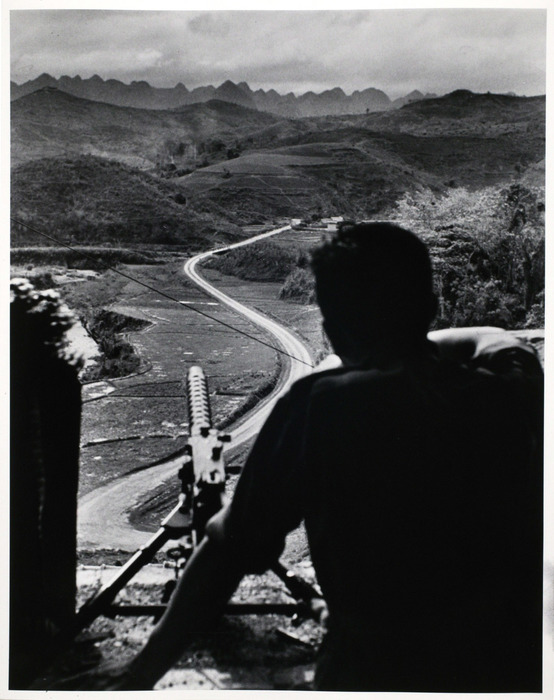” It doesn’t matter if you take a great picture if no one knows what it’s about ” – Carl Mydans
Carl Mydans was an American photographer born in 1907. Born and raised in Boston, he earned a B.S. degree from the Boston University school of Journalism in 1930. Mydans’s career as a journalist began with freelance work for the Boston Globe and the Boston Post. He continued as a staff writer for the American Banker, a New York Wall Street daily.
In 1931, Mydans acquired a 35mm camera and entered the world of photojournalism, becoming one of a new breed of reporter: those who knew how to handle the typewriter and the camera alike. Observant by nature, Mydans was able to translate into the visual what was sometimes difficult to describe with words alone.
He obtained his first important photographic assignment in 1935 after he had joined what was to become the Farm Secruity Administration (FSA). He began to work as a photographer under the leadership of Roy Stryker, who assigned Mydans to document the cotton industry in the South.
In 1935, he traveled throughout New England and America’s South, documenting the end of a rural-based economy, and gained a measure of renown for his images of bedraggled Arkansas farmers and their families. It was the Great Depression, and the poorest of America’s poor were devastated by the economic downturn. “One picture, of a Tennessee family living in a hut built on an abandoned truck chassis, portrays the misery of the times,” noted Mydans’ Times of London obituary, “as starkly as any photographs by his more celebrated contemporaries.”

Mydans’s stay with the FSA was brief. In 1936, he was hired as one of the four photographers to help launch Life magazine; he remained an active staff photographer until the magazine closed in 1972. Those 36 years, during which he covered major news events in the United States, Europe, and Asia, were the most important years in his career.

During World War II, Mydans travelled over 45,000 miles photographing images of life and death throughout Europe and Asia. He photographed England preparing for attack, Italy under Mussolini, the Finnish campaign against Russia, Belgian refugees streaming into France, and France at war in 1940 and again in 1944 during the advance of the 5th U.S. Army.

Between 1940 and 1944, Mydans and his wife Shelley, a former Life researcher, were in Asia, first covering Chungking in its stand against the Japanese bombings, then in Burma, Malaya, and the Philippines. In the Philippines they were both captured by the Japanese and imprisoned for 21 months. They were released to US authorities in exchange for Japanese prisoners.

After their release, Mydans was sent back into Europe for pivotal battles in Italy and France. By 1944, Mydans was back in the Philippines to cover MacArthur’s return. He snapped the moment when General Douglas MacArthur purposefully strode ashore in the Philippines in 1945. The legendary officer had declared, when the Japanese came in 1942, “I shall return,” and Mydans’ photograph of the formidable general immortalised that claim for posterity. Some asserted that it must have been staged, but Mydans resolutely defended the photograph as entirely spontaneous, though he did admit that MacArthur was savvy about public-relations opportunities. The general had appeared in Mydans’ other memorable image from that assignment, watching with other top U.S. brass as a Japanese delegation signed the official documents of surrender on an early September day in 1945. “No one I have ever known in public life had a better understanding of the drama and power of a picture,” Mydans, said about MacArthur.

Mydans also captured the signing of Japan’s surrender aboard the U.S.S. Missouri.
Some of Mydans’s other famous pictures include: the bombing of Chongqing, angry French citizens shaving the heads of women accused of sleeping with Germans during the occupation in 1944; a roomful of excited royal youngsters and their staid older relatives in 1954; and a 1950 portrait of Douglas MacArthur smoking a pipe.
He also photographed the war from the viewpoint of the ordinary soldier or sailor. “Resourceful and unruffled, Mr. Mydans sent back pictures of combat that even now define how some remember World War II, Korea, and other conflicts,” noted the New York Times.
At the war’s end, despite his two years in captivity, Mydans bore no ill will toward the Asian nation, Mydans and his wide accepted an assignment to head Time-Life’s news bureau in Tokyo for four years. Time-Life was the publisher of Time, Life and other top magazines, which Mydans continued to provide with an array of visual stories. He went on to cover the war in Korea, then was stationed for several years in England, and for a year and a half in Moscow.
In 1948, he just happened to be in the city of Fukui when a destructive earthquake struck; some of his shots were taken on the street while buildings were collapsing around him.
After Life magazine ceased to exist, Mydans continued his work as a photojournalist, handling assignments from Time, Fortune, Smithsonian Magazine, and many other publications. He published several books, one co-authored by his wife, and in 1951 he was the recipient of the US Camera Gold Achievement Award.
International Center of Photography: Encyclopedia of Photography. New York: Crown Publishers, Inc., 1984, p. 351